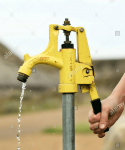Hi, I'm new to pools but not new to electric motors and I have some background with fluid mechanics.
I actually did perform a small experiment on my Tristar VS pump and reducing flow at the discharge side does reduce power. Yes it goes against conventional wisdom, which mostly relates to combustion engines, not electric motors, but it still holds true.
I don't have a flow meter and I only relied on the number my Omnilogic display for watts consumed, but it still proves that reducing flow on a centrifugal pump does reduce power consumed, It's not just a theory.
Since my pool is relatively small and the installer went all out with a 2.7HP pump, I run the pump at 80% max speed, which is 2760RPM. I have three sheer descents with three separate valves and a jandy valve that switches between return and sheer descents. I can only run either sheer descent or returns. Using sheer descent valves I am able to control the discharge flow.
With the pump running at 2760 RPM and sheer decent valves fully open I am consuming 1200W according to omnilogic and my filter shows 9psi.
With two out of three valves fully closed, the wattage drops to around 900W and pressure goes up to around 15psi.
Gradually closing the third valve the power consumed drops as well. I was able to get it down to about 580W, with water just trickling and 20 psi on the filter.
Now, in comparison, if I run my pump at 30%, which is 1035RPM, the power consumed is at 90W and all three sheer descents trickle, not just one and the psi is so low that my filter shows 0psi. So clearly in my particular setup, with an over sized pump, slowing down the RPM is the way to go to save power.
So what does this really mean? Well, in my opinion, it means that there is no "right" answer. But the more information we have, the more informed decision we can make to fit our individual needs.
For example, on a brand new install or a major reno where the old equipment needs to be changed anyways, going with a VS pump makes the most sense, plus it's the only way if you want to integrate automation.
But for those with existing single speed pumps, or those that need to get a new pump because the old one failed, installing a flow control valve on the discharge may be a much better option than upgrading to VS pump and all the associated controls that go with it.
RPM is not the only way to control power consumption for electric motors coupled to centrifugal impellers.



